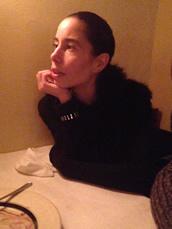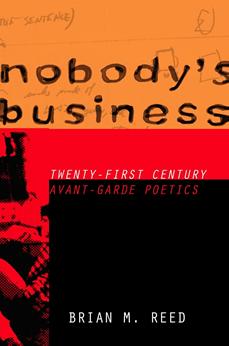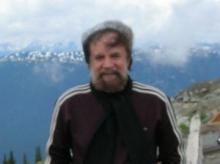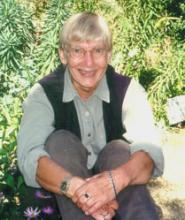English departments are eclectic places these days. As a faculty, our scholarship and teaching center on reading and writing a wide variety of texts. Our investigations contribute to deeper understandings of literary and cultural texts, to the writing of fiction and poetry, and to knowing more about how language and rhetoric work in settings in and out of the academy. This year the newsletter editors asked faculty who wish to contribute to write a little about their own sense of the directions the profession is currently taking. Some responded by talking about their own work and their teaching, especially their teaching of graduate students who set the scholarly and pedagogical paths for the future. Others wrote about their own fields and what they understand as continuing traditions and emerging directions in them. Here are their responses.
Bob Abrams
One way to answer your question—“What’s up in literary and cultural studies these days?—is to take a look at the sorts of dissertations that we’re directing in the Department. In my case, they span an interesting gamut.
These include:
- an interdisciplinary study, at the intersection of cartography, descriptions of colonial landscape, feminism, and nineteenthcentury medicine in which tropes and paradigms informing the literature of exploration and travel entail modes of would-be mastery and power which reemerge in medical literature claiming to “map the vagina” in scientific ways;
- a study of late nineteenth-century American writing which discovers elements of pragmatism in naturalism, and vice versa, to the degree that literary texts that seem to fall under either of these rubrics must be read with greater complexity and nuance;
- a reinterpretation of the American Romance such that our understanding of this genre is brought up to date, and offered a Marxist reading;
- a study of the California landscape (with a careful look at poetry, architecture, landscape description and film) as a site of the underlying immateriality of materiality, and of metamorphosis, where one feels indefinitely on the threshold.
As for me, I seem to be moving in several different directions as well. I’ve all but completed a long study of the positive values of Poe’s “aesthetic of catastrophe and ruin” which draws upon Freud’s analysis of the case of Judge Schreber and his theory of the uncanny, but also Lacanian psychoanalysis, Mary Douglas’s pioneering study of the epistemologically subversive properties of dirt and filth, and Bernard Tschumi’s essays on architecture and disjunction. I’m also reviewing two recent books on American pragmatism for American Literature, and I’ll be delivering a paper at this year’s American Comparative Literature Association conference, held in Seattle, on difficult literary negotiations between “hospitality” and “security” in an age of pandemic, terroristic infiltration, and the internet, in which space is becoming ubiquitously porous in ways that are by no means easily monitored and policed.
Carolyn Allen
Although I continue my interest in feminist theory, I recently have been writing and teaching about emotion and affect as those two terms are used in literary study. Other disciplines (especially psychology, philosophy, geography and political theory) have long produced scholarship in either emotion or affect. In the humanities the two terms are sometimes used interchangeably, though recently “affect” seems to have won out as the rubric of choice. Under it, scholars write about phenomena as different as the country’s feeling of threat following 9/11, the rhetoric of neurophysiology in the nineteenth century, the bodily responses of readers of mysteries, the social empowering of racialized minorities, and the intersections of memory and loss in fiction. My forthcoming article on Marilynne Robinson discusses the presence and delineation of loneliness and kindness in her recent fiction.
Anis Bawarshi

Anis Bawarshi Over the past 25 years, scholarship in rhetorical genre studies, a second area of my research (in which I focus on everyday genres), has contributed to our understanding of how genres mediate social activities, providing insight into how systems of related genres coordinate ways of knowing and doing within recurring situations. From this scholarship has emerged a view of genres as both social (typified, recognizable, and consequential ways of organizing texts, activities, and social reality) and cognitive phenomena (involved in how we recognize, encounter, and make sense of situations). Pedagogical 
Jessica Burstein
What have I been doing with myself, I hear you cry. Good question. You should always keep an eye on your 
Eva Cherniavsky
In American Studies, I think much of the current scholarship is fueled by a sense of urgency around the dangers and crises of our historical present. To many scholars of U.S. culture and society, the present appears deeply precarious: the institutions of modern democratic politics seem increasingly dysfunctional; we are confronted with staggering (and ever widening) inequality, besieged by a consumerist culture ever-more organized around debt, rather than income. A watershed moment and things aren’t changing for the
Louis Chude-Sokei

Monika Kaup
My promotion to Professor became effective in Fall 2014. I am currently pursuing a dual focus: 1) continuing
I gave a keynote address at a conference on “The Baroque and the Emotions” in Melbourne, Australia and an invited presentation at the 2014 Conference on “Rudolfo Anaya: Tradition, Modernity, and the Literatures of the U.S.” Article versions of both lectures, “Feeling Baroque in Art and Neuroscience: Joy, Sadness, Pride, as well as a Spinozist Solution to the Quest for Happiness,” and “Rudolfo Anaya’s Bless Me, Ultima: A Nuevomexicano Contribution to the Hemispheric Genealogy of the New World Baroque,” are forthcoming in conference proceedings. In June 2014, I was a featured speaker at the 15th International Baroque Summer Course, on“Baroque and Neobaroque in the Spanish and Portuguese World,” at the Werner Oechslin Library Foundation in Einsiedeln, Switzerland, with a presentation on “Theorizing the Baroque’s Alternative Modernity with Bruno Latour’s Actor-Network Theory.”
My new book project, “Post-Poststructuralism: New Ecological Realisms in Contemporary Theory and Post-Apocalyptic Narrative” is about a trend towards new realisms after poststructuralism. Within this broader movement, my point of intervention is to orient myself towards a realism of complex wholes, actor-networks, and ecologies, rather than a realism of isolated parts and things. The book aggregates contemporary theorists and theoretical orientations from philosophy and non-reductionist biology and explores applications of these ideas in close readings of recent post-apocalyptic fiction (such as Atwood’s MaddAddam Series, and McCarthy’s The Road).
Jeff Knight
What’s going on in Renaissance literature, textual studies, and the history of books? In a word: reading. But 
Charles Laporte

Meanwhile, I hope to finish my next book quickly enough to benefit from what scholars are calling the “religious turn” in new literary studies: the recent revival of interest in religious literatures, the reassessment of what secularization means, the belated realization among literary critics and other scholars that the academy has generally underestimated the force of religion in the modern world. Poetry does help us to understand it better, I think, in ways that I am still sorting out. I am grateful to my excellent colleagues and students for aiding my reflections on these and so many related matters.
Colette Moore
My research in the history of the English language combines very new technologies with very old ones: 
Middle English language provides several helpful reference points for considering the English language today. Studying the ways that medieval England was multilingual and multidialectal, for example, is important context for thinking about the relationship of different languages and dialects in the present-day United States. And studying the effects of language contact when Latin was a lingua franca teaches us about the spread of global Englishes in postcolonial and anti-colonial settings.
In my teaching, I have enjoyed exploring these issues and others. This term, I am teaching a new 200-level course pitched at non-majors, called “Invented Languages: from Elvish to Dothraki” which will provide students with a set of linguistic tools in phonology and grammar in order to look at different constructed languages. Examining imaginary languages turns out to be a great way to learn about the structure of English. They also provide us a window into our culture and literary imagination. Marianne Moore famously described poetry as presenting “imaginary gardens with real toads in them” – I see constructed languages as the kind of “real toad” that makes our imaginary gardens so vivid.
Brian Reed
The study of contemporary American poetry remains a free-for-all. Do you value adventurous, edgy, experimental writing? Do you prefer poetry that speaks from the heart, that speaks to and for popular audiences? What role should poetry play, if any, in twenty-first-century concerns such as environmentalism and the quest for social justice? Do digital technologies represent
I haven’t recovered yet from the shock of seeing one of my recent articles quoted in the headnote for a writer who has just been added to the new edition of the Norton Anthology of Postmodern American Poetry. In other words, a critic can write something speculative and risky one day, and blammo a few days later have it end up in a textbook, being presented as settled truth and received opinion. That’s both exciting and disorienting. You’re helping to turn the here-and-now, in all its vibrancy and complexity, into “the past,” something that future generations can discuss and analyze in school. Do you, as a critic, accept that responsibility? Refuse it? Change the subject?
David Shields
The essay, as writers of it never tire of reminding ourselves, comes from the French “essai,” which means “trial,” “experiment,” “attempt.” This is the center of the “nonfiction” I’m interested in: the book-length essay. The personal essay. The lyric essay. “Essay” throws the emphasis squarely on the literary. Not straightforward journalism, though essay can of course encompass that. Not straightforward memoir, though of course essay can encompass that as well. For me, the key move is to take the supposed raison d’être of nonfiction and use it as a trampoline off which to bounce into the most serious questions: What is “truth”? What is “reality”? What is memory? What is knowledge? What is a self? How much can a self know of an other? The most interesting aspects of existence are thus foregrounded.

Given those interests, here are some of the directions of my new work:
In a culture of abundance, I’m trying to adopt a strategy of abundance rather than one of artificial scarcity. I’m trying to take a potential weakness (publishing “too frequently”) and turn it into a strength—a model that’s much closer to how the culture now works rather than a 19th century or 20th century model of a tome every several years. My life centers around art-making, and my art centers around my life. The result is an active engagement in (I hope) both my life and the culture’s life. (There may well be a technological and economic aspect to this: Withholding makes sense if one is selling individual items, but if everything is available to everyone for free or via subscription, the commercial motivation for withholding is reduced.)
I explore “myself” but always in the context of a specific thematic/philosophical investigation— e.g., celebrity, sexuality, race, mortality, “reality”—and this, I hope, is what distinguishes my work from standard oversharing. I’m very interested in disclosure, rather than silence, in literary and emotional risk, and the attendant anxiety within myself and the reader and the culture as a whole.
Recent and forthcoming books:
Other People: Takes and Mistakes, forthcoming from Knopf/Random House in 2016. I’m substantially reconceiving and recombining seventy-three essays in order to form a sustained meditation on otherness: can one person know another person? How do we live through other people? How do other people live through us? Is the gap between people fillable? If not, how does or doesn’t art fill the gap?
War Is Beautiful: A Pictorial Guide to the Glamour of Armed Conflict, forthcoming from PowerHouse/Random House in 2016. A deconstruction of a major news organization’s use of combat photography during the Iraq and Afghanistan wars.
That Thing You Do With Your Mouth: The Sexual Autobiography of Samantha Matthews, as told to David Shields, forthcoming from McSweeney’s Books, June 2015. A narrative that explores what is for Samantha and for me and for many people a crucial or even the question: how and to what degree is it possible to get beyond early trauma?
Life Is Short—Art Is Shorter: In Praise of Brevity, coauthor/coeditor (with former UW grad student Elizabeth Cooperman), forthcoming from Hawthorne Books, April 2015. A sustained argument for the excitement and urgency of literary brevity in a hyper-digital, post-religious age.
I Think You’re Totally Wrong: A Quarrel, Knopf, January 2015 (James Franco’s adaptation of the book into a film is premiering at DOXA documentary film festival in Vancouver in April 2015). A nearly-to-the-death debate about life and art with my former UW student Caleb Powell.
Salinger, coauthor with Shane Salerno, Simon & Schuster, 2013 (New York Times bestseller list). An oral biography of J.D. Salinger, focused on the cost of art and the cost of war.
How Literature Saved My Life, Knopf, 2013. Blending confessional criticism and cultural autobiography, I explore the power of literature to make life survivable, even endurable.
Juliet Shields
Recently, many scholars working on the eighteenth century have been exploring the connections between
Jesse Oak Taylor

John Webster
My interests of late have continued my ongoing focus on pedagogy, but have expanded to include reading 

